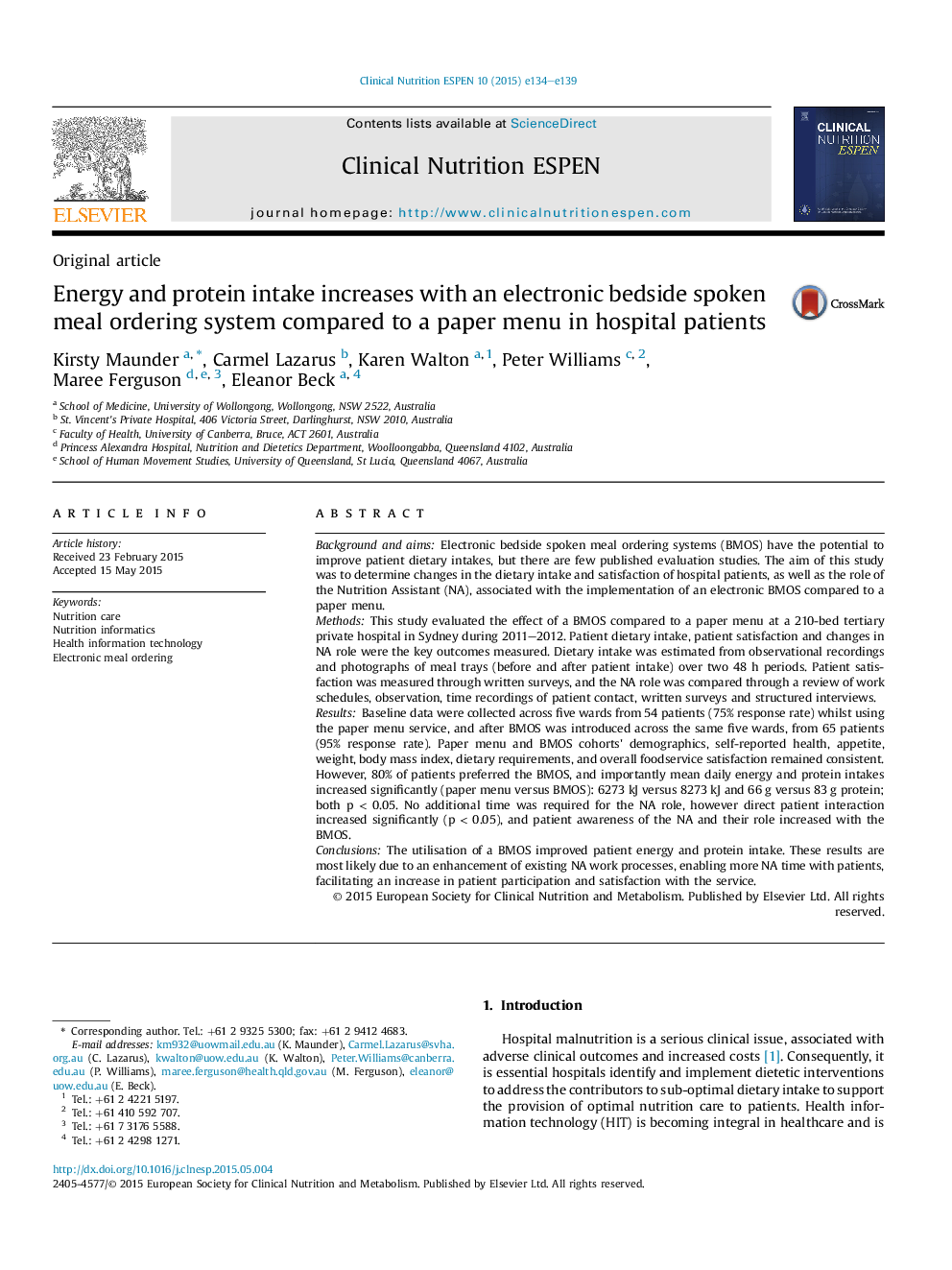| کد مقاله | کد نشریه | سال انتشار | مقاله انگلیسی | نسخه تمام متن |
|---|---|---|---|---|
| 2685057 | 1142824 | 2015 | 6 صفحه PDF | دانلود رایگان |
Background and aimsElectronic bedside spoken meal ordering systems (BMOS) have the potential to improve patient dietary intakes, but there are few published evaluation studies. The aim of this study was to determine changes in the dietary intake and satisfaction of hospital patients, as well as the role of the Nutrition Assistant (NA), associated with the implementation of an electronic BMOS compared to a paper menu.MethodsThis study evaluated the effect of a BMOS compared to a paper menu at a 210-bed tertiary private hospital in Sydney during 2011–2012. Patient dietary intake, patient satisfaction and changes in NA role were the key outcomes measured. Dietary intake was estimated from observational recordings and photographs of meal trays (before and after patient intake) over two 48 h periods. Patient satisfaction was measured through written surveys, and the NA role was compared through a review of work schedules, observation, time recordings of patient contact, written surveys and structured interviews.ResultsBaseline data were collected across five wards from 54 patients (75% response rate) whilst using the paper menu service, and after BMOS was introduced across the same five wards, from 65 patients (95% response rate). Paper menu and BMOS cohorts' demographics, self-reported health, appetite, weight, body mass index, dietary requirements, and overall foodservice satisfaction remained consistent. However, 80% of patients preferred the BMOS, and importantly mean daily energy and protein intakes increased significantly (paper menu versus BMOS): 6273 kJ versus 8273 kJ and 66 g versus 83 g protein; both p < 0.05. No additional time was required for the NA role, however direct patient interaction increased significantly (p < 0.05), and patient awareness of the NA and their role increased with the BMOS.ConclusionsThe utilisation of a BMOS improved patient energy and protein intake. These results are most likely due to an enhancement of existing NA work processes, enabling more NA time with patients, facilitating an increase in patient participation and satisfaction with the service.
Journal: Clinical Nutrition ESPEN - Volume 10, Issue 4, August 2015, Pages e134–e139
